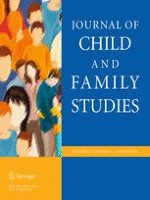09-05-2015 | Original Paper
A Treatment Selection Model for Sibling Conflict Based on Observational Measurements
Gepubliceerd in: Journal of Child and Family Studies | Uitgave 1/2016
Log in om toegang te krijgenAbstract
When presented with sibling aggression in pre-adolescent referrals, child clinical psychologists are likely to consider dysfunctions in both motivational and interpersonal skill domains. The distinction is important. Motivational dysfunctions suggest interventions involving parent training (e.g., immediate timeout and/or token economies), while interpersonal deficits invite skill building approaches. Three projects are presented in which two clinic observational methods, the Sibling Conflict Resolution Scale (SCRS III) and the Sibling Play Analog (SPA), were developed, refined, and/or evaluated. Outcome data support the clinical use of the SCRS III and SPA in conjunction with parent-collected home frequency counts of sibling aggression on Behavior Record Cards (BRCs). A treatment selection model based on observations obtained from the BRC, SCRS III, and SPA is proposed to guide clinicians in evidence-based decision making: intervention (yes or no), the target of intervention (sibling aggression, sibling conflict resolution skill deficits, or both), the type of intervention (parent-mediated motivational approaches, sibling conflict resolution skill building, or both), and the effectiveness of that intervention at home and in the clinic.
